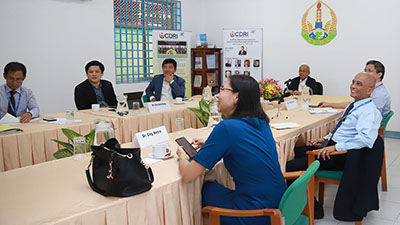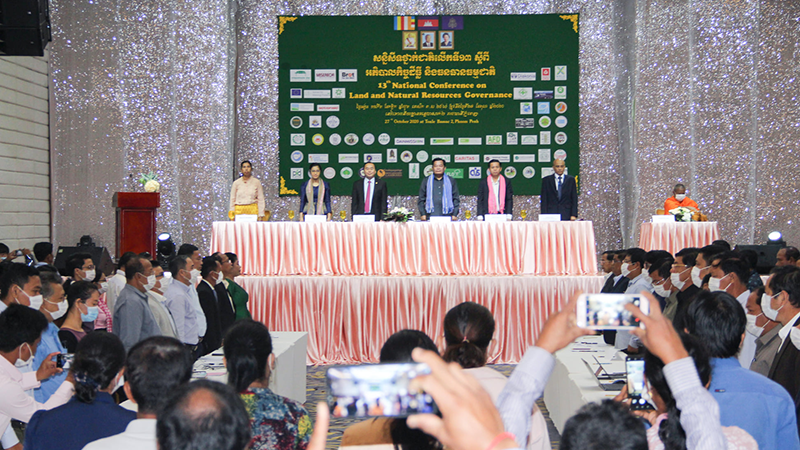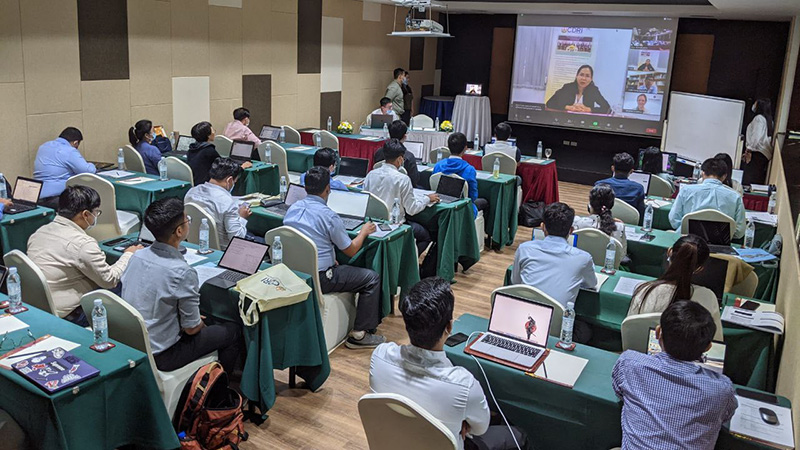
News
26 August 2021Blog – Will the Pandemic’s Push Towards a Digital Economy Mean Greater Inequality in Mekong?
Author: Dr Jayant Menon, a Visiting Senior Fellow at the ISEAS – Yusof Ishak Institute, Singapore, and Adviser to the IDRC Project on the Impact of Covid-19 on Inclusive Development and Democratic Governance
One of the supposed silver linings of the COVID-19 pandemic has been the acceleration towards a digital economy. Lockdowns and social distancing measures have hastened the adoption of technologies of the Fourth Industrial Revolution (4IR) that enable work-from-home arrangements, remote learning, telemedicine and other novel forms of service delivery. While this acceleration is generally welcome, there is concern that it may increase inequality within and between countries. The adoption rate of these technologies has favoured the more developed countries, threatening to increase the digital divide in ASEAN and beyond. This is of particular concern to the transitional economies of the Mekong regions – Cambodia, Laos, Myanmar and Vietnam (CLMV).
Apart from digital infrastructure being limited in developing countries in general CLMV in particular, access to what is available can vary by income class within these countries. The urban poor may not have the financial means to fully participate while the technology may not reach rural or isolated regions. More concerning is the threat to their jobs, as automation and robotics take hold initially in the low-skilled, repetitive tasks and mid-skilled jobs. Apart from the greater risk of unemployment in the low- to mid-skilled categories, low wage growth in these sectors relative to higher skills, known as the skills premium, will add to wage and income inequality. The 4IR may also lead to a further concentration of the gains from trade in the hands of the few. Therefore, not only is inequality between the countries of ASEAN, or even CLMV, likely to increase, a rise in income and wealth disparities within them appears unavoidable.
Although attention has focused on how the 4IR may exacerbate inequality, various countervailing effects are often overlooked, perhaps because they will take time to materialise. The 4IR can produce offsetting effects that enhance economic inclusion by increasing connectivity, improving agricultural incomes, supporting micro and small and medium enterprises (MSMEs), and enabling industrial leapfrogging.
Mobile phones enable the poor to access new sources of information such as high-frequency news and market prices that can materially affect incomes. In a famous study undertaken in South India, Robert Jensen showed how the adoption of smartphones by fishermen and wholesalers dramatically reduced price dispersion and eliminated waste, increasing consumer and producer welfare. Smartphones also enable new forms of education, such as online courses and virtual classrooms, and new healthcare services, such as telemedicine linked to diagnostic pills. Platforms such as Ushahidi from Kenya is democratizing access to new technology and innovation and assisting in improving governance and accountability.
Mobile phones give farmers better access to prices, weather information, and knowledge about soil, seeds and fertiliser. They may also enable a “sharing economy” to take hold, whereby farmers who cannot afford to buy expensive mechanical equipment can rent it by the hour from other farmers by accessing online sharing sites, like Trringo in India.
MSMEs are often constrained by a lack of access to business and financial services, but blockchain technology has the potential to dramatically increase the security of cross-border financial transactions and logistics even in the poorer countries of Southeast Asia where these services are relatively underdeveloped.
Technologies of the 4IR create the opportunity for CLMV to leapfrog, or bypass traditional aspects of industrial development. A demonstrable example is avoiding costly investments in telephone lines and focusing instead on mobile telephone infrastructure. Apart from the savings in public expenditure that can be directed towards other social goods and services, this type of technology can also be used to access other services such as financial transfers and medical advice, as noted earlier. Localized renewable energy production, such as solar power coupled with new battery storage technology, could reduce the need for investing in expensive power distribution networks. Such solar farms can provide much needed electricity to poor communities in isolated regions in a sustainable manner.
While these factors demonstrate that the 4IR can aid economic inclusion, tackling rising unemployment amongst the low- to mid-skilled and widening wage disparities due to the skills premium will be key if inequality is to be addressed.
As an immediate response, enabling greater mobility of low skilled workers would curtail unemployment in labour-abundant countries and help sustain growth in labour-importing ones.
Divergent demographic trends will add to the need for greater factor mobility. While CLM have relatively young populations, the rest of ASEAN and East Asia is ageing rapidly. CLM are capital importers, while most ageing economies tend to be capital exporters. Policies that enable greater factor mobility can help reduce differences in capital-labour ratios and assist in productivity catch-up in the region to promote more inclusive growth.
Such policy changes must first overcome anti-globalisation forces, reinforced by the pandemic. Such forces can assume deceptive forms; for instance, they can appear in the guise of supporting resilience of supply chains through “reshoring”. Such moves would curtail rather than promote factor mobility. In this environment, regional initiatives like the ASEAN Economic Community and the Regional Comprehensive Economic Partnership that aim to liberalise trade can help. Even if these agreements cannot promote factor mobility, they can help equalise factor prices by increasing commodity trade. That is, even if factors cannot cross borders, increased trade can produce similar results by narrowing cross-country differences in wages and rentals, and thereby reduce adjustment costs.
The pandemic’s push toward a digital economy may worsen inequality, but it will also increase inclusion in some areas that will serve as a partial offset. If policies that increase trade, labour, or capital mobility can be implemented, then short-run adjustment costs will be eased. Transforming systems of education and learning, and creating deeper local capital and financial markets are required to address long-term challenges posed by the 4IR, including rising inequality.



